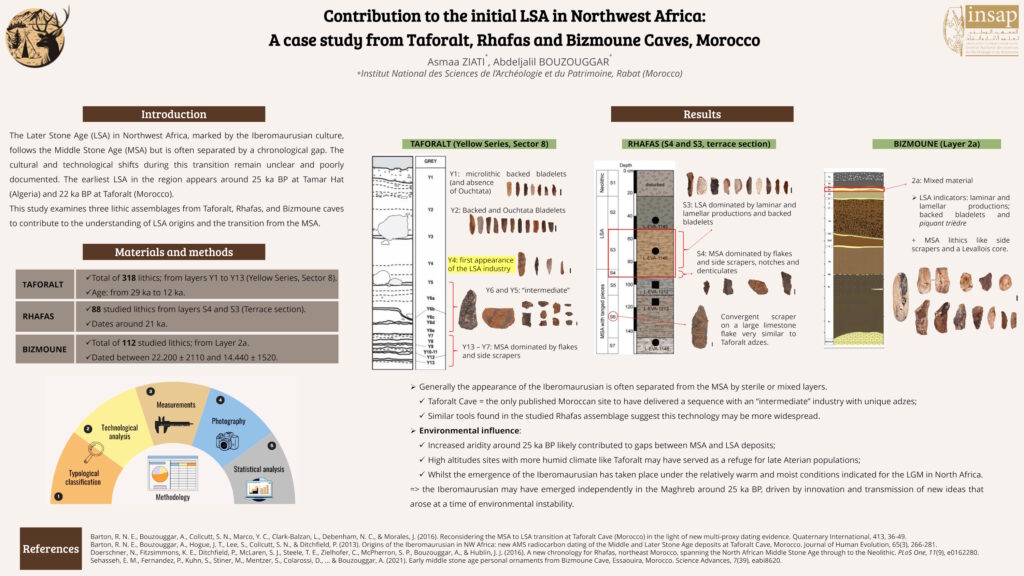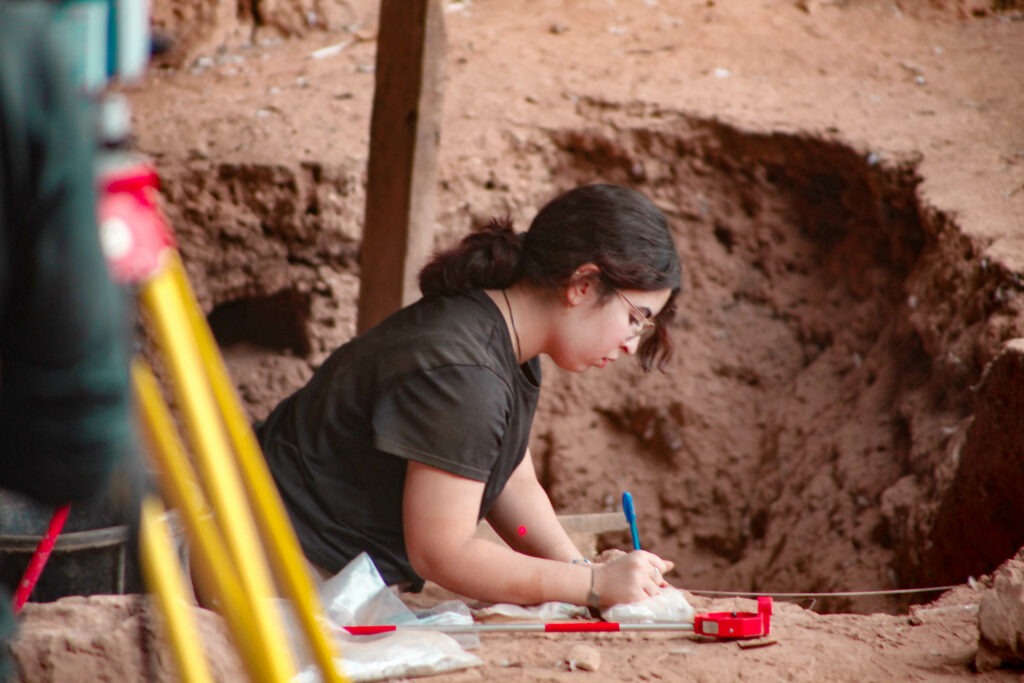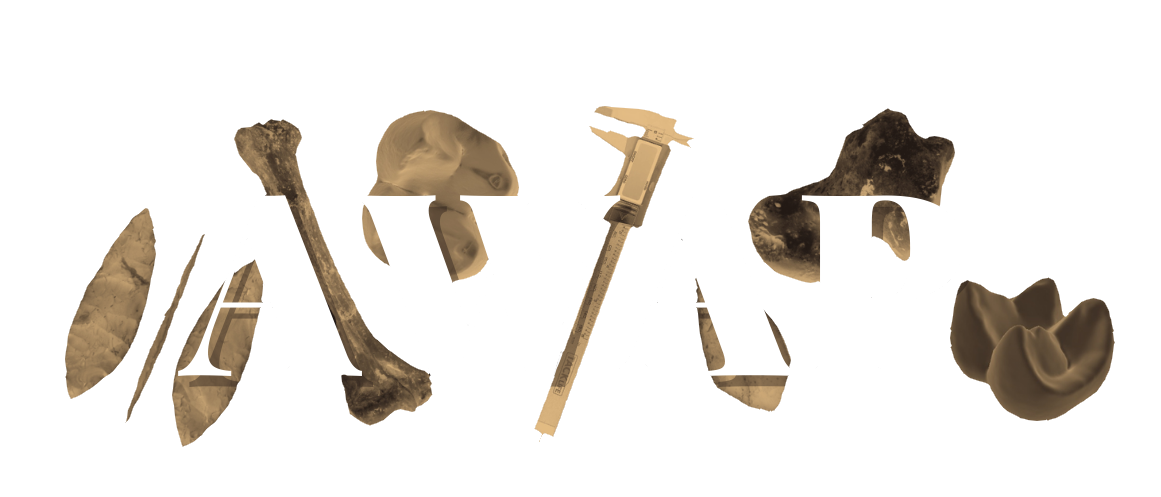
Congratulations to Asmaa Ziati
awarded the prize for the Best Poster
During the 5th edition of VCWAP, early-career women researchers presented 42 posters on GatherTown©, an interactive platform that fosters real-time discussions. This year, we introduced a brand-new, custom-designed map by Imola Benkö, creating an immersive experience set in an archaeological and paleontological excavation site.
Among this great lineup, Asmaa Ziati’s work stood out, earning the Best Poster Award. She was awarded a €100 prize, generously provided by AWAP.
Congratulations, Asmaa, on this well-deserved recognition!
About the poster: ‘Contribution to the initial LSA in Northwest Africa: A case study from Grotte des Pigeons (Taforalt), Rhafas and Bizmoune Caves, Morocco’ by Asmaa Ziati and Abdeljalil Bouzouggar
Asmaa Ziati’s research explores the transition from the Middle Stone Age (MSA) to the Later Stone Age (LSA) in Northwest Africa, a period marked by significant yet poorly understood cultural and technological changes. Focusing on lithic assemblages from Taforalt, Rhafas, and Bizmoune Caves in Morocco, her work investigates the emergence of Iberomaurusian industries.
By analyzing stone tool production, she aims to determine whether these technologies appeared suddenly—suggesting external influence and possible population replacement—or if they evolved gradually from earlier traditions. Her study provides new insights into the origins of microlithic bladelet industries in the region.

Meet Asmaa Ziati
Asmaa Ziati is a first-year PhD student specialising in lithic technology. She completed her BA and MA at INSAP (Rabat, Morocco), focusing on the Middle to Later Stone Age (MSA/LSA) transition in Northwest Africa.
Her BA research explored the lithic assemblage from the transitional layers at Taforalt Cave, a key site for understanding this period. For her master’s thesis, she expanded her work on the initial LSA, analyzing stone tools from three major Moroccan sites: Taforalt, Rhafas, and Bizmoune Caves, a study she presented during the VCWAP 2025 (see above).

Now, in her PhD at the National Institute of Archaeology and Heritage, in Rabat (Morocco), Asmaa continues to investigate the MSA/LSA transition across a broader set of key Moroccan sites. She is actively involved in archaeological excavations at Taforalt, Bizmoune, Contrebandiers, and Kehf El Hammar Caves.
